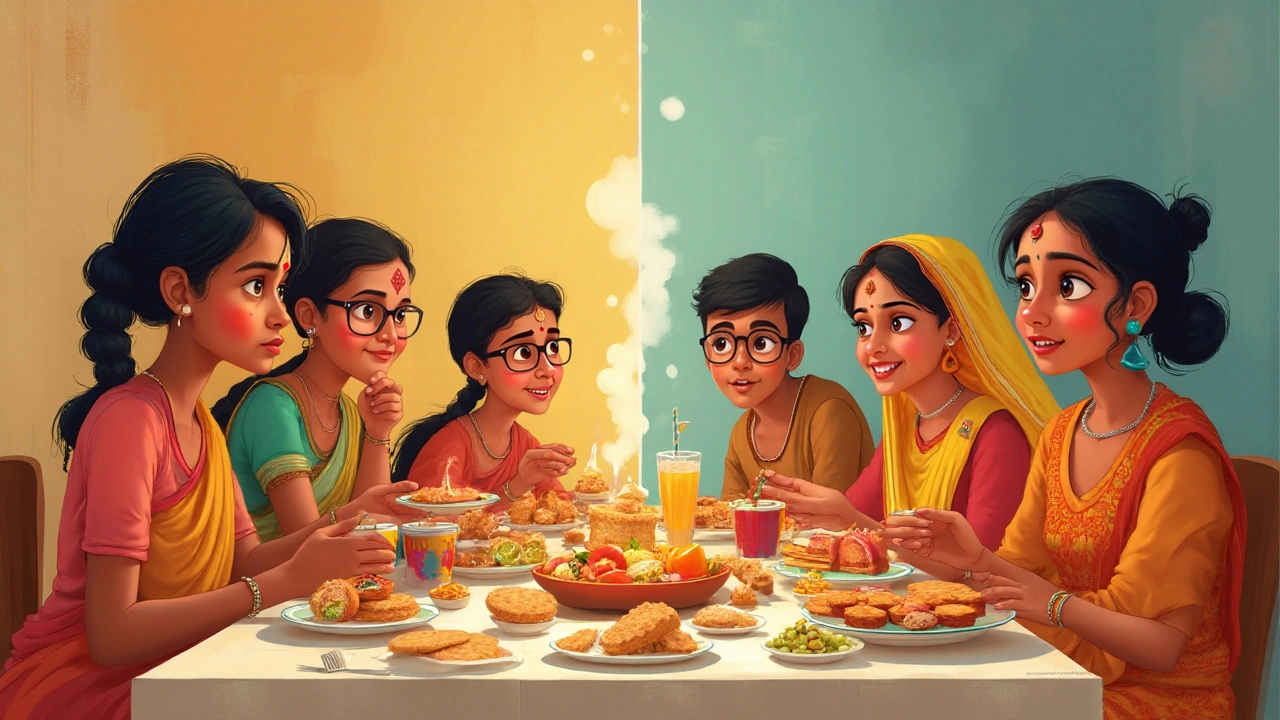Take a peek inside any supermarket trolley in Auckland or flip over your favorite chocolate bar, and the numbers tell a story: people everywhere are hooked on sugar. But some places out-sweet the rest. It isn’t just a cliché; certain countries actually consume mind-boggling amounts of sugar per person. It’s not just about ice cream cones and soft drinks—it’s breakfast cereals, sauces, even bread. So, which country prawns up the sugar charts? And what’s really driving our cravings?
The World’s Sweet Tooth: Who Really Consumes the Most Sugar?
Imagine pouring out 125 grams of sugar every single day. That’s about 31 teaspoons—enough to fill half a teacup if you’re keen to check. That’s how much sugar, on average, an American was eating in 2024. The United States still holds the crown for having the highest sugar intake per capita in recent decades, even as some other nations try to catch up or cut back.
Here’s a glimpse at how sugar adds up in different countries:
| Country | Annual Sugar Consumption Per Person (kg) | Daily Average (grams) | Year (latest available) |
|---|---|---|---|
| United States | 57 | 156 | 2024 |
| Germany | 43 | 118 | 2023 |
| Netherlands | 39 | 107 | 2023 |
| United Kingdom | 34 | 93 | 2023 |
| Australia | 32 | 88 | 2024 |
| India | 19 | 52 | 2023 |
| Japan | 17 | 47 | 2023 |
The US isn’t alone in its sweet obsession—many European countries are not far behind. What’s wild is that even places famous for their healthy food cultures, like Australia and New Zealand, have sugar numbers that might surprise you. It’s hidden in savory sauces, wraps, and kids’ lunchbox snacks. Don’t just blame soft drinks—much of it lurks in processed foods and packaged meals. If you lined up all the energy drinks and “wellness bars” sold in one year, the sugar inside would fill hundreds of Olympic swimming pools. That’s not just a quirky visual; it’s the reality driving diabetes and obesity rates worldwide.
Some countries, like India and Japan, manage to keep numbers lower, but even there, modern eating habits are nudging averages up.
Why Do Some Countries Eat Way More Sugar Than Others?
The story behind these numbers says a lot about culture, history, and even love for convenience. America’s addiction dates back generations—think of the post-war boom, when processed food exploded and breakfast cereals sold the idea that a sweet start was a “balanced” morning. Add decades of soda marketing (those classic Super Bowl ads didn’t film themselves) and you have a nation of sugar loyalists. It’s estimated that nearly half of American added sugar comes from beverages alone.
Europe isn’t immune. Germans love their chocolates and cakes. In the Netherlands, biscuits and syrupy treats fill supermarket aisles, and it’s nothing out of the ordinary for tea to turn sugary fast. The UK? Try saying no to a sticky toffee pudding. Cultural habits shape norms—think of how dessert is an essential part of celebration food in Western countries.
Meanwhile, places like India and Japan keep their numbers lower, partly because of traditional diets. A typical Indian breakfast, say poha or dosa, relies more on spices and grains than sugar rushes (though Indian sweets like jalebi and gulab jamun are legendary for festivals). Japanese meals mix umami, salt, and fresh notes rather than desserts—though mochi and sweet buns are gaining pop-culture fame.
Marketing is another reason. Scan TV in any high-sugar country and it’s endless: candy commercials, soda tie-ins with sports. Supermarkets tempt you with limited-edition “unicorn” lollies or nostalgic flavors. Plus, large food companies add sugar to make products more addictive and keep shoppers coming back. Cheap sugar crops (thanks to government subsidies in the US and Europe) help keep manufacturing costs low, so companies pour it in. As a result, whole generations are raised expecting everything from tomato sauce to yoghurt to taste a bit sweet. And if you’ve ever checked the nutrition label on “low fat” foods, you’ll notice sugar fills the gap left by the missing fat—to keep that creamy mouthfeel and taste.
It isn’t only about culture or ads. Poverty and time shortages play a part. Strapped for cash or rushed in the morning? Cheaper and quicker processed foods almost always contain more sugar. Busy families aren’t comparing labels—they grab what’s at eye level, what kids won’t fight over. It all adds up.

The Not-So-Sweet Health Effects of High Sugar Diets
No one needs a lecture about “sugar is bad.” But the numbers out of high-sugar countries read like health horror stories. The Centers for Disease Control (CDC) in the US links high sugar intake directly to soaring rates of obesity, heart disease, and type 2 diabetes. It’s not just about weight—young people in their twenties and thirties are being diagnosed with pre-diabetes at rates unheard of a few decades ago. It even messes with mental health; several real studies report higher sugar intake can increase the risk of depression, especially in teens.
It goes further. Eating a lot of sugar can jack up blood pressure, damage arteries, and fuel inflammation throughout your body. Ever felt that tired-sluggish-foggy feeling after lunch? Could be a sugar spike followed by a hard crash—your body’s insulin working overtime. And those “hidden” sugars are probably the sneakiest culprit. For example, a standard flavored yoghurt that seems ‘healthy’ might contain 15g, which is practically 4 teaspoons right there. Combine that with granola, plus jam, maybe juice—breakfast sometimes blows past the World Health Organization’s recommended 25g per day long before you hit lunchtime.
If you’re a parent, this one might hit home. Kids in the US eat almost triple the suggested maximum: medical associations say this outpaces even the ‘80s when sodas and candy bars peaked. Even tooth decay, which seemed like a solved problem, is on the rise again in school-aged children in the UK and Australia—directly from hidden sugars in snacks and drinks.
Sure, your body needs some carbs, but these days, most people aren’t eating sugar as quick energy for farming or labor. Instead, it fast-tracks unwanted calories and sparks an endless appetite—“one more bite” syndrome, even when you’re not really hungry. When sugar is everywhere, it’s almost impossible to dodge unless you hunt it down.
But not every country’s health story is hopeless. With home-cooking traditions strong in Asia or the Mediterranean, many families still make meals from basics, using less sugar, more spice, and real ingredients. Those places tend to have longer life expectancies and lower obesity rates for a reason.
How to Slash Sugar—And Still Keep Food Fun
Cutting back sounds daunting when sugar’s hiding in everything from peanut butter to pickles. But real-world fixes can make a difference, even if you don’t want to swear off dessert forever.
- Label sleuthing: Ignore vague “healthy” claims and check the nutrition panel—under ‘carbohydrates, of which sugars.’ The closer to zero, the better (for packaged foods at least).
- Bake (or cook) at home: You get to control what goes in. Try halving the sugar in recipes—you’ll be shocked at how little difference it makes after a couple of tries.
- Watch for drinks: Juice looks innocent, but often has nearly as much sugar as soda. Flavored milks and iced teas catch you out too. Sparkling water with a squeeze of lemon is sometimes all you need.
- Beware ‘fat-free’: If the label says “low-fat” or “reduced fat,” odds are sugar is packed in to make up for lost flavor. Think savory over sweet where possible.
- Redefine treats: Make sweets an occasion, not a staple. Turn to fruit (or dried fruit in small doses) when cravings hit.
Some governments are fighting back. The UK’s sugar tax on sodas launched in 2018, and soft drink sugar levels actually dropped as brands reformulated. School canteens in parts of Australia and New Zealand are slowly shifting to serve fewer sugar-laden foods. But the world won’t change overnight—so hacks at home count. If you want to blend in some changes Kiwi-style, swap sugary cereal for porridge with cinnamon or berries. Or bake Anzac biscuits with extra oats and less sugar next time you want a treat. Fresh markets and basic meals aren’t just “nice to have”—they’re a direct hack on your daily sugar numbers.
Do you have to starve yourself of fun to drop your sugar intake? Of course not. But knowing where sugar hides (and that the US really does eat more than almost anyone else) makes skipping a second brownie way less of a buzz-kill. Awareness lets you steer the ship, not sugar cravings or sneaky advertising.
